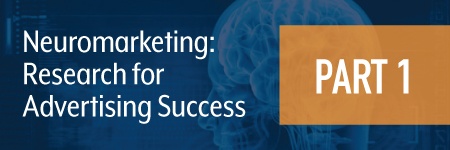
Sean Doyle
Sean is a principal at FitzMartin, and our leading mind and voice on sales and marketing strategy. Sean is particularly adept at applying the science of behavior change to the art of sales and marketing. It’s an approach that he and FitzMartin have developed over thousands of client engagements since 1992.
Never miss a post
Subscribe below to receive blog updates.
I recently met thinker and writer Jeremy Bagnall. He shared this report on the application of neuromarketing, and I was intrigued. The term “neuromarketing” has been thrown around a fair amount, and it only takes a glance at the exciting research coming from neuromarketing to understand that it’s a concept worth noticing. Jeremy Bagnall sheds some light on the subject with his report, which is a great introduction to the foundations of neuromarketing in the 21st century.

At FitzMartin, we’ve always relied on a solid base of cognitive science and behavioral marketing to inform our decisions for clients. We understand the value of knowing the science behind how and why consumers react the way they do, and the implications this has for business best practices in all areas. In this particular article, a new friend of ours, thinker and writer Jeremy Bagnall explores the implications that neurology can have on marketing, and what methods have already been used to improve the effectiveness of advertising.
Neuromarketing, or the application of neurology to marketing, is a concept that has been gaining momentum as technology increasingly evolves. As you’ll see in this first part of Jeremy’s writing, neuromarketing has the potential to impact how we approach marketing initiatives. Interesting food for thought...
Sean
Neuromarketing is the study of how the human brain responds to marketing techniques and why consumers make purchasing decisions. It is a scientific approach to consumer purchasing behavior and how the brain reacts to the promotion and advertising that companies use to market themselves.
Liked what you read? You can access the full white paper by clicking below.
About the Author:
Jeremy Bagnall is a graduate of the University of Montevallo Stephens College of Business where he studied Marketing. He was also a student of the baseball diamond and one of the leading members of the Falcon Pitching Staff. Jeremy's passion for advertising is directly relevant to his passion on the pitcher’s mound. As he explains it, pitching comes down to the constant mental battle with the player at home plate. The pitcher is continuously striving to stay one step ahead, and plan his next move based upon what pitches he has displayed for the hitter. Both players are trying to get inside one another’s thought process and predict what is coming up next. Marketing is essentially the same concept; attempting to stay ahead of the curve and decipher consumer responses, behavior, and buying habits.
Contact Jeremy:


